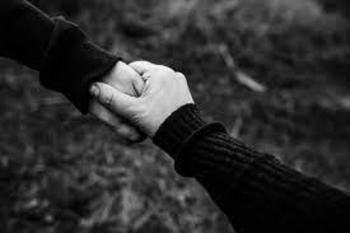 How our relationships are with our parents and caregivers from infancy through childhood has a significant impact on how we interact with others in relationships as adults. Attachment Theory was developed by John Bowlby, a psychoanalyst and psychiatrist who studied the impact of parental and caregiver behavior on children.
How our relationships are with our parents and caregivers from infancy through childhood has a significant impact on how we interact with others in relationships as adults. Attachment Theory was developed by John Bowlby, a psychoanalyst and psychiatrist who studied the impact of parental and caregiver behavior on children.
The Anxious Attachment Style Signs
Through research, four different attachment styles were developed. They include anxious, avoidant, disorganized, and secure. The anxious attachment style includes the following characteristics and signs:
· Low self-worth and negative self-image
· High focus on the partner and the relationship
· Increased anxiety when alone or not in a relationship
· Fear of abandonment
· Fear of not being good enough for the partner
· Clingy and needy behavior
· Constantly seeking approval, reassurance, and support from the partner
· Need for constant intimacy and closeness
· Overly dependent on the partner
· Loss of self-identity, autonomy, and independence
These behaviors create a pattern in all adult relationships. While they are more pronounced in intimate partner relationships, they can also occur with friends or at work.
In addition, the anxious attachment style also creates a person who seems destined to choose the wrong partner. These people often find themselves in relationships with loved avoidant attachment styles, who just want to be independent, distant, and emotionally and physically detached from the partner.
These toxic relationships are characterized by the anxious attachment style trying to hold desperately to the avoidant attachment style who can never meet their needs.
Making a Change
While your attachment style is developed when you are a child, it is possible to make changes to move from the anxious attachment style to a secure attachment style. The secure attachment style is characterized by:
· High and positive self and high self-esteem and self-worth
· Able to express emotions and set boundaries
· Ease in developing both intimate relationships and friendships
· Value emotional/physical intimacy with their partner but also comfortable with independence for themselves and their partner
· Give and take in a relationship is normal
· Tend to look for the good in people and have reasonable ease with trust
· Believe in being honest, compassionate, and tolerant or others
· Comfortable with sharing roles in a relationship and having some level of healthy dependence
Moving to healthier behaviors starts with recognizing the issue and working with a therapist or joining an Inner Circle such as my tribe, Wake Up Recovery with others going through the same transformation. This process will include looking back and addressing thoughts and believes about yourself that may have been present since early childhood.
Other strategies to use to move forward to a more secure attachment style in future relationships include:
· Becoming comfortable with yourself – learning to be comfortable as a single is important to break the relationship cycle that is only reinforcing negative thoughts and messages.
· Develop healthy boundaries – being able to state your wants and needs and your emotions and feelings is important to see yourself as an autonomous person, not only as a part of a couple in a relationship.
Build your self-worth – developing an understanding of who you are as a person and the talents, gifts, and skills you bring to the world helps to create a more positive and accurate self-image and sense of worth. This helps to be more assertive and confident in recognizing yourself as a unique, valuable, and important person on your own.
It is also critical to find the right partner. Ideally, a person with an anxious attachment style benefits from being in a relationship with someone with a secure attachment style. Being open to feedback and learning to trust, provide space, and avoid the impulse to become clingy or demanding in the relationship is essential. A therapist working with couples, if you are not single, can help improve communication, the ability to express emotional needs, how to manage conflict in the relationship and to help the two partners support each other.
Anxious attachment styles should also learn to recognize the avoidant attachment style. This is the oil and water combination, resulting in toxic relationships where the anxious person chases and the avoidant person retreats in a constant cycle.
Sherry Gaba, LCSW and Transformation Coach


